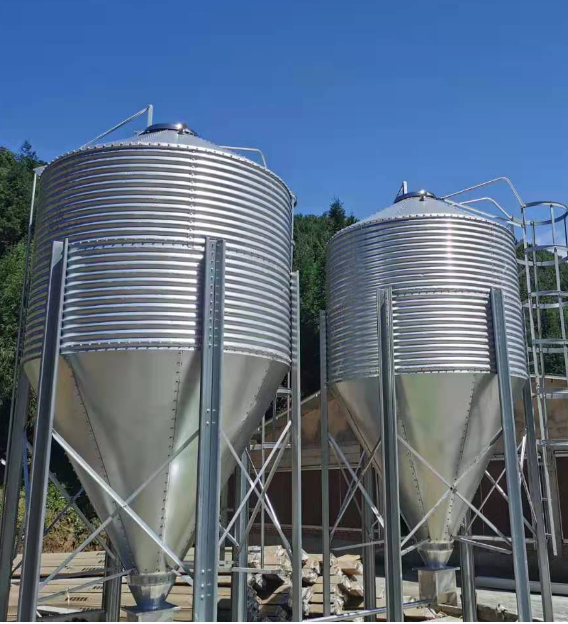Introducción
In the dynamic landscape of modern poultry farming, the quest for sustainability and cost-effectiveness has become paramount. One significant aspect contributing to this endeavor is the adoption of energy-efficient options, particularly in essential components like poultry house fans. This article explores the availability of energy-efficient options from poultry house fan suppliers and delves into the substantial impact these choices can have on overall operational costs.

Types of Energy-Efficient Poultry House Fans
Poultry house fans have evolved, with technological advancements introducing energy-efficient alternatives to traditional fan systems. These options include innovations in fan motor efficiency, blade design, aerodynamics, control systems, and automation. Compared to their conventional counterparts, energy-efficient poultry house fans offer superior performance while consuming less energy, making them a compelling choice for forward-thinking poultry farmers.
Factors Influencing Energy Efficiency
Understanding the factors that contribute to the energy efficiency of poultry house fans is essential for farmers looking to make informed decisions. Key considerations include the efficiency of the fan motor, the aerodynamics of the fan blades, the sophistication of control systems, and the seamless integration of the fan into the overall ventilation system. By carefully evaluating these factors, farmers can select fans that not only optimize energy use but also enhance the overall effectiveness of their poultry house ventilation.
Assessing Operational Costs
Operational costs in poultry farming encompass various elements, including feed, labor, and energy consumption. When considering the adoption of energy-efficient poultry house fans, a comprehensive analysis of operational costs is crucial. Comparisons between traditional and energy-efficient fan systems should include not only the initial investment but also factors such as energy consumption, maintenance, and the projected lifespan of the equipment. A thorough assessment provides a clearer picture of the long-term savings and return on investment associated with energy-efficient options.
Poultry house fan supplier Selection Criteria
Choosing the right supplier is pivotal in acquiring energy-efficient poultry house fans. Farmers should conduct thorough research to identify poultry house fan suppliers offering energy-efficient options that align with their specific needs. Evaluation criteria should include the energy efficiency ratings and certifications provided by the poultry house fan supplier, as well as any available data on operational cost savings. Selecting a reputable poultry house fan supplier ensures not only the quality of the equipment but also ongoing support and guidance throughout the implementation process.
Casos prácticos y casos de éxito
Real-world examples and success stories from poultry farms that have adopted energy-efficient fan systems provide valuable insights. These case studies offer quantifiable data on energy savings, operational cost reductions, and improvements in overall farm efficiency. Testimonials from farmers who have experienced the benefits of energy-efficient poultry house fans can help prospective adopters gain a better understanding of the practical implications and advantages of such systems.
Challenges and Considerations
While the benefits of energy-efficient poultry house fans are evident, it’s essential to acknowledge potential challenges in their adoption. These may include higher upfront costs, technological complexities, or resistance to change. Farmers can mitigate these challenges by working closely with suppliers, seeking expert advice, and investing in staff training. The ongoing support from poultry house fan suppliers is crucial in addressing any implementation issues and ensuring a smooth transition to energy-efficient fan systems.
Tendencias e innovaciones futuras
The field of energy-efficient poultry house fans is dynamic, with ongoing research and development leading to emerging technologies and innovations. Farmers are encouraged to stay informed about these advancements, as they may impact not only energy efficiency but also the overall sustainability of poultry farming. Anticipated developments in fan technology could open new possibilities for increased efficiency, reduced environmental impact, and enhanced operational performance.
Recommendations for Poultry Farmers
Guidelines for assessing energy efficiency needs in poultry house fan systems are essential for farmers navigating the decision-making process. This includes understanding specific farm requirements, considering scalability, and factoring in long-term benefits. Ongoing monitoring and maintenance of energy-efficient fan systems are also critical to ensuring optimal performance and maximizing cost savings over time.
Conclusión
In conclusion, the availability of energy-efficient options from poultry house fan suppliers represents a significant stride towards sustainable and cost-effective poultry farming. The impact of these choices on operational costs cannot be understated, with potential savings in energy consumption and maintenance costs. Poultry farmers are encouraged to explore the diverse offerings from reputable poultry house fan suppliers, leverage real-world case studies, and stay abreast of future trends to make informed decisions that align with their farm’s specific needs and goals. By embracing energy efficiency in poultry house fans, farmers not only contribute to a more sustainable future but also enhance the economic viability of their operations.
Productos relacionados





